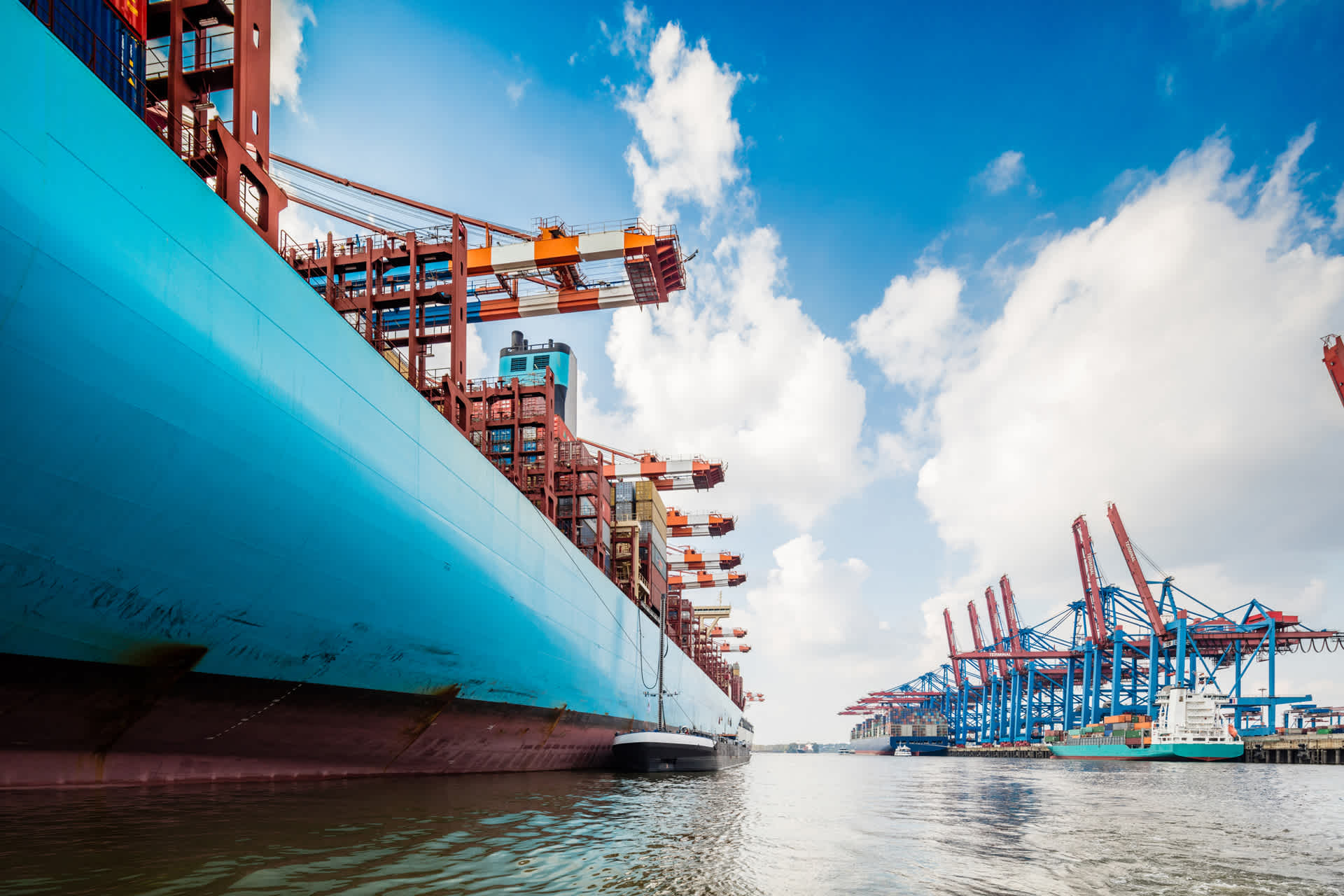Global Logistics Update
Freight Market Update: July 19, 2022
Ocean and air freight rates and trends; customs and trade industry news plus Covid-19 impacts for the week of July 19, 2022.
Freight Market Update: July 19, 2022
The State of Trade: Revisiting 301 Tariffs - What’s In Store for U.S.-China Trade Relations? | Weds, July 27 @ 9:00 am PT / 12:00 pm ET
European Freight Market Update Live | Tues, August 9 @ 16:00 pm CEST/ 15:00 pm BST
Ocean Freight Market Update
Asia → North America (TPEB)
- Floating rates continue to downtrend despite a sharp increase in bunker fuel prices. Importers continue to look to the floating market for short-term savings solutions as the rate differences between the fixed and floating market separate further. The latest bunker fuel increases are expected to see floating rate levels increase with the shift to increased spot market demand. However, the continuing downtrend in floating rates leads to there being lower floating demand than previously thought and capacity is still available.
- Rates: Rates remain soft in many major pockets.
- Space: Open, except in a few pockets.
- Capacity/Equipment: Open, except in a few pockets.
- Recommendation: Book at least 2 weeks prior to cargo ready date (CRD). For cargo ready now, importers might consider taking advantage of currently available space and softer floating market rates.
Asia → Europe (FEWB)
(carried over from 7/12/22 edition)
- Volumes have picked up in Q3. However, the overall market is relatively stable without a major surge in volumes. There have been a large amount of blank sailings and omissions. Europe’s consumer confidence and demand level continues to be impacted by economic and political uncertainty.
- Rates: Rates are mostly extended or slightly reduced going into 2H July.
- Capacity/Equipment: Overall space is starting to fill up again. Congestion in European ports is causing sailings to return to Asia late, resulting in additional delays and some blank sailings.
- Recommendation: Allow flexibility when planning your shipments due to anticipated congestion and delays.
Europe → North America (TAWB)
- Demand for August is expected to be lower due to some European factories closing from late July until mid-August. Anticipate a high return of demand beginning in September. Congestion is improving on both the East and West Coast but still far away from normality.
- Rates: Stable at high levels. No sign of steep rate decline in the near future.
- Space: Still very tight with pockets of space available in August.
- Capacity/Equipment: Equipment availability remains the biggest challenge for all EU origins, particularly in the Mediterranean area. Low empty stacks at inland depots, prioritize pick up from the Port of Loading.
- Recommendation: Book 4 or more weeks prior to CRD. Request premium service for higher reliability and no-roll.
- Read more: Rising US imports keep pressure on trans-Atlantic
Indian Subcontinent → North America
- Demand at origin remains stagnant as external forces such as political/economic unrest in Sri Lanka and U.S. East Coast (USEC) port congestion add further worry of service disruptions.
- Rates: remain at lower levels compared to peaks just a few months ago. Some key ocean carriers are bullish on demand and have already implemented rate increases on services to the USEC.
- Capacity/Space: Available at Freight All Kinds (FAK) rate levels. Capacity to USEC is being constrained due to ongoing berthing delays in Savannah as well as on-dock issues at NY/NJ. Vessels are taking longer to return back to India for loading, which is resulting in irregular sailing schedules and port omissions.
- Equipment: A rise of equipment deficits are being reported across India particularly in smaller ports and inland container depots (ICD)
- Recommendation: Take advantage of declining rates. In the past carriers have implemented blank sailings to avoid underutilization. This could lead to increased rates on the horizon.
North America → Asia
- Vessel arrivals and available capacity remain fluid for all U.S. West Coast (USWC) ports. USEC ports continue to see challenges with vessel congestion and some vessel strings still omitting Charleston and Savannah entirely. The rail operations from Chicago over the West Coast have improved and are open to increased volumes. Erratic vessel schedules continue to cause significant challenges with posted earliest return dates and vessel cut-offs at the port.
- Rates: Limited GRI’s for July announced, there are no advisories for August yet.
- Capacity/Equipment: Deficits on containers and chassis continue to plague Inland Port Intermodal (IPI) origins. Chicago has been the most reliable. Availability for standard equipment has not been an issue for most ports. Capacity from the US Southeast to India remains constrained due to continuing port omissions for Charleston and Savannah.
- Recommendation: Please place bookings 4 weeks prior to vessel Estimated Time of Departure (ETD).
North America → Europe
- Congestion issues persist in Europe due to local labor actions at baseports in Germany and the Netherlands. The port of Houston continues to experience significant capacity constraints due to schedule delays and port congestion with one service being reduced from weekly to biweekly. USWC service to Europe remains extremely tight due to void sailings and skipped ports caused by systematic delays. USWC coverage for Mediterranean ports now has reduced capacity due to one string being phased out.
All carriers have issued a booking stop for shipments to Ukraine, Russia, and Belarus. - Rates: No General Rate Increase (GRI) announced for July or August yet.
- Capacity/Equipment: USEC capacity Service to North Europe has capacity available. Vessel capacity from the port of Houston has been very tight due to a significant increase in demand and delayed vessels. Deficits are still plaguing many IPI origins. Availability for standard equipment at ports has not been an issue, but special equipment is hard to come by.
- Recommendation: Please place bookings 3 to 4 weeks in advance for East Coast/Gulf sailings and 6 weeks for Pacific.
North America Vessel Dwell Times

Air Freight Market Update
Asia
- N. China: The market continues to cool down with carriers reducing rates for both Transpacific Eastbound (TPEB) and Far East Westbound (FEWB) lanes. Additional capacity has also been added to the EU which will only further drive down the rate levels. New Covid cases are still being reported in Shanghai, however at the moment there has not been any impact on air freight or trucking services. Terminals and airlines are still operating as normal.
- S. China: The market demand is increasing and more cross-border shipments are moving ex-HKG. Due to crew issues, Cathay Pacific has canceled multiple TPEB flights in July which will result in schedule disruptions.
- Taiwan: The TPEB market is picking up quickly and space is getting tight, especially to the USWC. The FEWB market is also getting tight; carriers are able to offer more space and flexibility for weekday flights.
- Korea: The market ex-Korea remains the same as the week prior with demand continuing to be very slack with no signs of picking up anytime soon.
- SE Asia: Demand ex-Thailand and Malaysia continues to be slow and capacity is still available. Carriers continue to ask around for cargo in the market. Ex-Vietnam the market remains soft with some carriers even canceling flights due to low demand.
Europe
- Demand is stable and trending downwards, in line with low summer season levels.
- Ample belly capacity available. Global capacity level enough to sustain current demand.
- Rates are stable. Jet fuel price similar to the previous week.
- Disruption continues across major European hubs due to staff shortages. No significant impact on transit times yet.
- Build pallets below 160CM to increase possibilities of better uplift options and rates on passenger aircraft capacity.
- Deferred routings via secondary hubs generally still provide cheaper rates.
- For all trade lanes, continue to place bookings early to secure best uplift options and routings.
Americas
- Export demand is slightly softening due to a very strong U.S. Dollar.
- US airports are running at a normal pace.
- Capacity is manageable into all the Regions. European carriers in particular have increased the number of passenger flights for their summer schedules, consequently providing additional belly capacity into the Transatlantic Eastbound (TAEB) trade lanes.
- Shipments into Europe could experience additional destination dwell time due to some labor shortages in the main western European hubs.
- Rates remain stable and unchanged.
Trucking & Intermodal
Americas
US Import/Export Trucking: Market Trends
- Congestion continues at the Montreal and Toronto terminals and inland ramps. The volume coming into Toronto continues to surge, while the number of drivers continues to decrease, which translates into less drivers handling more volume and creating the previously mentioned congestion. On a YTD basis, the total truck visits to the rails has declined by almost 20% percent.
- Chassis shortages continue to persist, notably now in Memphis (95% utilization, 10+ day street dwell time) and in LA (9.5 day street dwell for 40’).
- East coast and gulf congestion will continue through July, with vessels at anchor in New York, Norfolk, and Savannah - 36 ships at the end of June awaiting berths with wait times in the 7-10 day range.
- LA/LB conditions have improved with only 3 ships at anchor at the end of June, and port dwells down to less than 5 days. Rail dwells continue to be elevated.
- Highway Diesel fuel prices remain record high
- East Coast ($5.85/gallon), Midwest($5.63/gallon), and Gulf Coast ($5.37/gallon)
- West Coast ($6.42/gallon), California ($6.90/gallon) and Rocky Mountain($5.69/gallon)
- British Columbia, Quebec and Ontario (~$7.3/gallon)
US Domestic Trucking: Market Trends
- The domestic Full Truckload (FTL) market has been suffering from the inventory glut with the highest inventory/sales ratios in history, current global inflation, record high diesel fuel prices, and most recently the sharp drop in container imports.
- Tender rejections by carriers has decreased by nearly 70% from 2020/2021 averages.
- Spot rates in the market have bottomed out to a 16-month low, down ~35% YTD, Contract rates fall in recent weeks after edging up for several months.
- Load-to-Truck ratios are down ~30% YoY, which is the key barometer for supply/demand in the marketplace.
- Tender volumes are down 19% YoY.
- Diesel prices remain at record highs, most recently $5.718/gallon. Fuel continues to be a much more taxing operating expense for fleets both on loaded and empty miles. It also increases contract rates which are primarily on Fuel Surcharge (FSC) schedules.
Customs and Compliance News
House Approves Tariff Elimination for Baby Formula
On July 15, the House of Representatives passed H.R. 8351 by a vote of 421-2. The bill would suspend duties on certain infant formula products imported through December 31, 2022.
U.S. and Kenya Launch New Trade Partnership
On July 14, the Biden Administration announced the launch of the U.S.-Kenya Strategic Trade and Investment Partnership. The USTR identified a wide range of issues on which the two countries will engage in the coming months, including customs procedures, digital trade, worker’s rights, and the environment.
Commerce Announces Circumvention Inquiry over Aluminum Foil from South Korea, Thailand
In a July 18 Federal Register Notice, Commerce initiated a new circumvention inquiry over aluminum foil imported from South Korea and Thailand. The inquiry stems from the existing antidumping order on certain aluminum foil from China and will focus on the extent to which Chinese inputs are processed. If the preliminary inquiry results in a finding of circumvention, Commerce may suspend liquidations and require cash deposits for subject entries made after the initiation Notice was published. Duties may also be applied retroactively.
Factory Output news
- Mainland China: Tesla Shanghai delivered a record high of 77,938 vehicles in China in June, up 177 percent year-on-year, with Japan, Australia, New Zealand and Singapore driving demand. Source
- Vietnam: Wood exports forecast at US$16.3 billion this year. Major export markets include the US, Japan, China, the European Union and the Republic of Korea. Source
- Thailand: With a goal of generating at least 25 billion Baht in revenue over the next five years, Thailand is aiming to become hemp production hub. Source
- India: Drop in rice crop yields in Thailand and Vietnam mark a good sign for India to boost rice export amid global crunch. Source
- Bangladesh: Furniture exports increased during the previous fiscal year due to improvements in areas such as quality, design, cash incentives and availability of manpower. Source
- Pakistan: Exports to regional countries such as China, Bangladesh, and India saw an increase of 18.26%. Source
Freight Market News
Truckers Protesting AB5 Block Oakland Terminal Access
According to FreightWaves, an estimated 400 owner-operators took to Port of Oakland in protest of California’s independent contractor law, Assembly Bill 5 (AB5). AB5 seeks to limit the use of independent contractors, mostly by reclassifying them as employees. As a result, protestors have managed to shut down truck traffic at all three terminals.
Number of Empty Containers at Port of LA Sets Record for June
Last month, the Port of Los Angeles handled nearly 877,000 Twenty-foot equivalent units (TEUs), setting the record for the busiest June in the port’s history—according to SupplyChainDive. The port’s cargo growth was largely due to the surge in empty containers, which experienced an 8% YoY increase.
Flexport Research Updates
Our latest update sees consumers’ preferences for goods starting to decline back to summer 2020 levels during Q3’22, with the main driver being a downturn in nondurables preferences (adjusted for inflation), which could be over halfway back to pre-pandemic levels by August.
Southeast Asia Sectoral Cost Indices
The latest report covers data for Q2 2022, showing the cost of production in furniture, electronics and auto-parts have all increased in Q2’22 versus Q1’21 while the cost of apparel sourced from China and Vietnam has fallen. China has lost competitiveness to Vietnam in furniture but held steady in apparel.
Trade Activity Forecast Indicator
In the latest update we introduce real (inflation adjusted) as well as nominal forecasts, finding imports adjusted for inflation on a balance of payments basis will rise by around 1% per month from June through September while exports are expected to decline by around 1% per month.
Weekly Economic Report: The Mighty Dollar
The U.S. dollar has strengthened in real terms against emerging economies and even more so against advanced economies. Among the economic changes that ensue will be a repricing of trade and an increase in crisis risk.
Air Timeliness Indicator: TPEB ↑ @ 11.5 days, FEWB ↑ @ 9.7 days.
Ocean Timeliness Indicator: TPEB ~ @ 95 days, FEWB ↑ @ 95 days.
US: In the latest update, a key consumer confidence measure hit new lows, but only fell slightly from last month, while retail sales increased sequentially.
EU: the inflation-adjusted value of EU imports fell by just 0.6% year over year while the time taken for ocean freight to leave Asia has started to increase.
Freight Market Update is a complimentary service from Flexport, the modern freight forwarder. If you're not already a subscriber, we invite you to subscribe here.
Please note that the information in our publications is compiled from a variety of sources based on the information we have to date. This information is provided to our community for informational purposes only, and we do not accept any liability or responsibility for reliance on the information contained herein.


